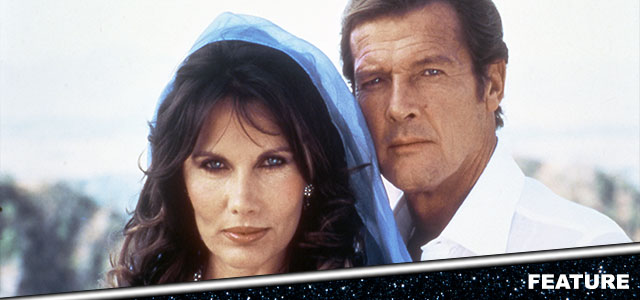
The 25th James Bond movie No Time To Die arrives in Cineworld in September, and we're counting down the days by revisiting all the 007 movies in chronological order of release.
In honour of Daniel Craig's swansong as 007, we're taking a nostalgic trip back through time. This week: Roger Moore stars in Octopussy...
What is the story of Octopussy?
A British MI6 agent turns up dead in east Germany, clutching a fake Faberge egg. Fellow spy James Bond/007 (Roger Moore) discovers that suave aristocrat Kamal Khan (Louis Jordan) is looking to reclaim the egg, and the trail initially leads to Khan's luxurious palace in India. While there, Bond also discovers Khan's connection to the mysterious Octopussy (Maud Adams) and her circus of women acrobats.
It eventually transpires that Khan is in cahoots with renegade Soviet general Orlov (Steven Berkoff), who has been supplying him with replicas of priceless treasures. In turn, Khan has been using Octopussy's travelling circus to transport the real gems into Western Germany. However, Bond discovers that Khan and Orlov are planning a double-cross, replacing the jewels with a nuclear bomb set to explode at an American Air Force base. In the process, Khan will get rich and the fanatical Orlov will realise his vision of a new world order. It falls to 007 to stop them.
How did Octopussy get made?
Released in 1981, For Your Eyes Only was something of a reprieve after the earlier excesses of the Roger Moore era. Producer Albert R. 'Cubby' Broccoli, one of the founders of the Bond franchise, sought to bring 007 down to Earth after the comedically-inclined Moonraker, forcing Britain's greatest secret agent to rely on his wits, rather than gadgets, to escape deadly situations.
Moore's age was, however, becoming increasingly apparent, not helped by awkward back-projection inserts during the stunt sequences – it was clear that his Bond was very much a lover, not a fighter, with Moore instead putting the human face on a massively accomplished stunt team. By the time the eighties started, trends and tastes were changing, propelled by the youthful and exuberant likes of Star Wars and Indiana Jones, two franchises that, crucially, also scored where it counts at the box office. The increasingly creaky Moore was finding it hard to sustain relevance in an era dominated by the fresh-faced, energetic likes of Harrison Ford.
The consensus stands that Moore should have stepped down after For Your Eyes Only, giving way to a younger, harder-edged Bond actor who could transition into this competitive decade more effectively. However, Moore decided to return for what would be his penultimate 007 movie, Octopussy, and Moore's advancing years (he was 55 by the time production started in 1982), were more pronounced than ever. That said, Octopussy's occasional darker moments do offer a glimpse of Moore's acting abilities; there's no denying he could hold the screen and convey seriousness when needed, something his well-regarded 1970 film The Man Who Haunted Himself demonstrates.
In fact, the producers did screen test several actors to take over from Moore before he again committed to the role. This included American star James Brolin (father of Avengers actor Josh), who undertook a screen test with eventual Octopussy actor Vijay Amritraj. Timothy Dalton's name was again mentioned in reference to the role, but he wouldn't take over until 1987's The Living Daylights.
Ultimately, Broccoli was able to persuade Moore to return for another Bond movie. It's reasoned that the filmmakers wanted to retain a familiar face to compete with rival Bond movie Never Say Never Again, released in the same year. The latter marked Sean Connery's return to Bond after 12 years, although it wasn't officially considered part of the franchise canon. Whereas the official Bond movies come from production company Eon, Never Say Never Again was distributed via Warner Brothers.
Never Say Never Again was the long-gestating passion project of writer Kevin McClory, who held the rights to Ian Fleming's Thunderball novel, and had long sought to bring his own version of the story to the screen. Following a 1963 High Court legal battle between McClory and Fleming, Eon cut a deal with the former: he was allowed to produce the movie of Thunderball, but wasn't allowed to craft his own version of Fleming's novel for a period of 10 years.
There was more fallout from this complex legal situation. McClory consistently blocked Broccoli's attempts to reinstate Blofeld and his Spectre organisation throughout the franchise – it's assumed this is why For Your Eyes Only begins with the malicious act of a bald, yet unnamed, villain (possessing a white cat no less) being dumped down a chimney.
As with pretty much all of the Moore Bond movies, Octopussy awkwardly flip-flops between silliness and sternness, suggesting the ongoing struggle to establish a consistent tone for the franchise. Moore had openly stated that his comedic twist on the character was meant to differentiate him from more rugged predecessor Sean Connery, but these lighthearted impulses often clashed abruptly with the tougher iteration of Bond as realised by original author Ian Fleming.
The plot of Octopussy is original, although inspired by Fleming short story, 'Octopussy and The Living Daylights'. The movie does, however, incorporate a scene from Fleming's 1967 short 'The Property of a Lady' where Bond attends a Sotheby's auction to bid for a Faberge egg; a later scene in which Bond and villain Kamal Khan compete at backgammon was lifted from Fleming's novel, Moonraker. In the story, Bond plays and defeats Drax at Bridge; Fleming's line "Spend the money quickly, Mr. Bond" made it into Octopussy. The script was a joint collaboration between regular Bond writer Richard Maibaum and associate producer Michael G. Wilson, who would become one of the gatekeepers of the franchise, along with Barbara Broccoli, after Cubby Broccoli's death.
Maibaum and Wilson worked from an earlier draft by Scottish author George MacDonald Fraser; he was the person who suggested the film be set in India, as it was one of the few countries the franchise hadn't visited. The temperature and colour of the country infuses the first half of Octopussy with a pleasing sense of atmosphere, as the palaces, crowded streets and market stalls of Udaipur lend an appropriately exotic edge. Octopussy entered production in 1982 on a budget of $27.5 million, making it one of the more expensive Bond movies, and therefore well-placed to take advantage of complicated stunt sequences.
Particularly well-captured by the crew is Udaipur's Monsoon Palace, the exterior of which stands in for Kamal Khan's own hideaway. It's an appropriately sweeping location for one of the more suave Bond villains, played to the hilt by veteran French actor Louis Jordan. He had earlier played Dracula, and back in the 1940s was famed as a matinee heartthrob in Max Ophuls' celebrated Letter To An Unknown Woman. Jordan's sense of civility and dry humour is well-matched with Moore's portrayal of 007, particularly when delivering lines like, "You have a nasty habit of surviving".
Additional locations in Udaipur included the breathtaking Lake Palace, which stands in for Octopussy's own lair. Talking of which, with her portrayal of the title character, Swedish actor Maud Adams becomes the only person to play one than one Bond woman. (She had earlier played the ill-fated Andrea Anders in 1974's The Man With The Golden Gun, again starring opposite Moore.)
The spirit of India also pervades the supporting cast. The aforementioned Vijay Amritraj, a celebrated tennis player, is Bond's loyal ally Vijay, who meets a horrific end at the hands of a spinning yoyo saw. And veteran Indian actor Kabir Bedi plays Khan's fearsome henchman Gobinda. In fact, Vijay's entrance scene leads to another one of those bizarre fourth-wall breaks familiar in the Moore movies, where he plays the Bond theme on a recorder as he charms a snake.
When the movie departs India at the halfway point, we're plunged into a more familiar Bond world of Cold War paranoia. The nuclear bomb threat of the movie's second half criss-crosses east and west Germany, although the sequences filmed on top of a moving train were captured in the Nene Valley in the UK. The thrilling stunt almost led to a crew member being decapitated in the process. The interior of the US Air Force Base where the bomb is set to go off was filmed at RAF Upper Heyford; the scene in which 007, disguised as a clown, must defuse the Bomb while fending off the sceptical top brass generates controversy. Is it fundamentally ludicrous that Bond would get painted up when the fate of the world is at stake? Or does the scene in fact generate a great deal of tension?
There is one especially effective scene where Moore, atypically forceful and commanding, confronts Steven Berkoff's insane General Orlov. It's a reminder that Moore had acting skills that were all-too-infrequently tapped during his time as Bond.
These relatively sober moments sit uneasily with some typically daft ones. In particular, Bond swinging through the Indian jungle to the sound of a Tarzan yell is hard to take.
And, of course, one cannot discuss Bond without looking at the pre-credits sequence. Octopussy is unusual in that the opening sequence is unrelated to the rest of the action. It is, however, a doozy, as Bond emerges from a dummy horsebox in his miniature jet, before out-maneuvering a homing missile and using it to destroy his original target. As one would expect, the scene finishes on a quintessential Moore flourish, as he pulls into a gas station, smirks and says: "Fill her up please."
READ MORE
- No Time To Die and the 6 James Bond movies we never got to see
- 7 actors who could play James Bond after Daniel Craig retires
- Shaken and stirred! Daniel Craig's defining 007 moments
What music is on the Octopussy soundtrack?
Longtime Bond composer John Barry, who had arranged the unmistakeable James Bond theme, returned to score Octopussy. It's perhaps ironic that Barry only ended up scoring the weaker Moore movies – he had been forced away from The Spy Who Loved Me and For Your Eyes Only for tax reasons, giving way to Mavin Hamlisch and Bill Conti, respectively.
Even so, Barry is a composer of such distinction that he brings real class and beauty to a tongue in cheek 007 adventure. By 1983, the composer's romantic, swooning style was firmly established, courtesy of scores like The Black Hole and Somewhere In Time. And this approach would reach its Oscar-winning apex with 1985's majestically lovely Out Of Africa.
Barry's work on Octopussy is among his most sensual and haunting in the franchise. It's dominated by the melody from the Rita Coolidge-performed title song, 'All-Time High' (so named because it was difficult for Tim Rice to make the lyrics rhyme). It's perhaps one of the more overlooked Bond themes, with an arrestingly sultry vocal performance from Coolidge and a heavenly string undercurrent from Barry, speaking directly of the film's exotic landscapes, not to mention the relationship between Bond and Octopussy herself.
Barry was rarely one to reinstate the particulars of a location in his music; he would rather the emotional truth of the scene spoke for itself. (Hence why Out Of Africa is scored not with indigenous music, but soaring, symphonic beauty.) There is a brief moment of sitar-led energy in Bond's arrival in India, but much of the score is occupied with dreamy statements of the All-Time High theme.
Even the action scenes are scored with an unusual mixture of languid atmosphere and energy, akin to Barry's approach on Moonraker. 'Palace Fight', for example, overlays a repetitious, exciting brass motif with smooth strings and flutes, creating a unique rhythmic approach that is entirely Barry.
The Cold War paranoia of the film's second half allows Barry's flair with suspense music to shine. He was so good at this, building clusters of percussion and xylophone into ominous statements of tension, which increases as Kamal and Orlov's plan comes close to succeeding.
How was Octopussy received?
In the year that two Bond properties went head to head, Octopussy emerged as the winner, at least financially speaking. Roger Moore's movie went on to gross $187.5 million worldwide; Never Say Never Again grossed $160 million against a more expensive $30 million budget. In terms of the critical responses, however, things were flipped.
Octopussy, by and large, received mixed to negative reviews on the basis of its convoluted plot, forced humour and Moore's age. Writing for The New York Times, Vincent Canby praised the film, but noted how "much of the story is incomprehensible".
Even some of the more retrospective reviews feel the need to check themselves. GQ's David Williams says the film is "one of the best 'Bad Films' of the franchise".
By contrast, the reputation of Never Say Never Again has weathered slightly better. In 1995, Entertainment Weekly critic Michael Sauter wrote that "even past his prime, Connery proves that nobody does it better".
It was perhaps inevitable that given Moore's advancing years, and the critical apathy towards such, the Bond franchise was reaching its next big shake-up. However, Moore had one more movie in him...
What was the next movie in the James Bond series?
A View To A Kill was the next Bond movie, released in 1985.
When is No Time To Die released in the UK?
No Time To Die is released on 30th September. Don't forget to tweet us your favourite James Bond movies @Cineworld.
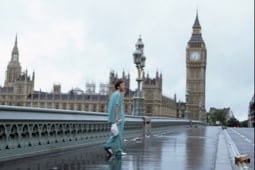
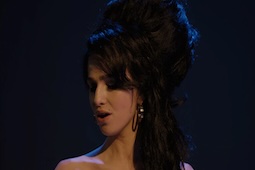
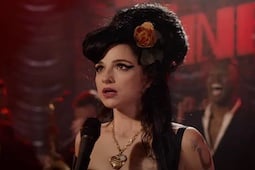
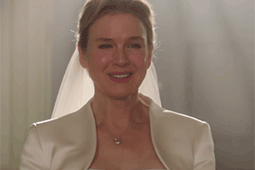
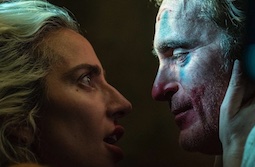
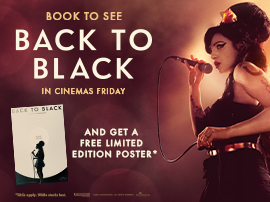

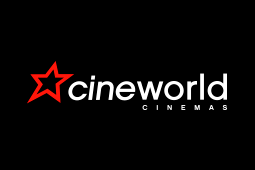
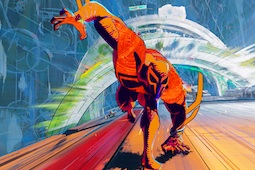
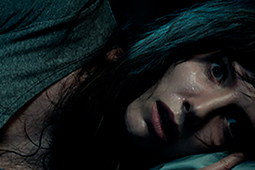
.jpg)


.jpg)
.png)






